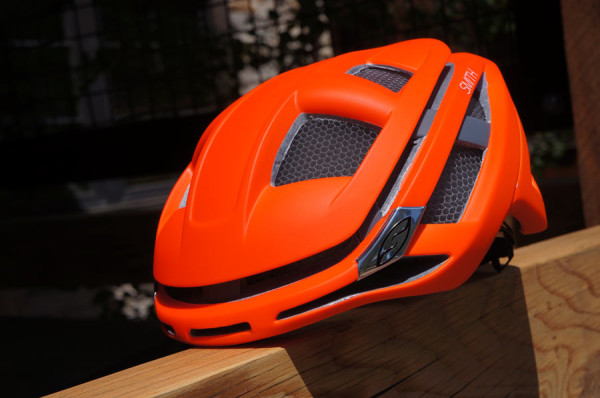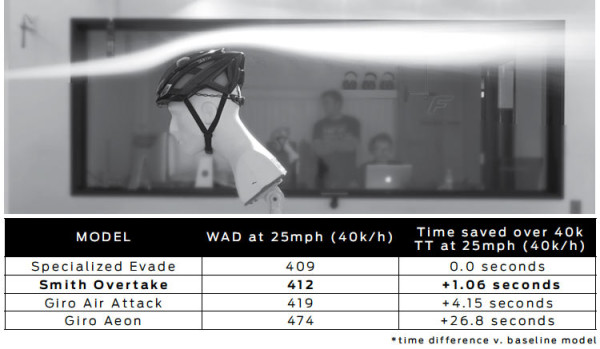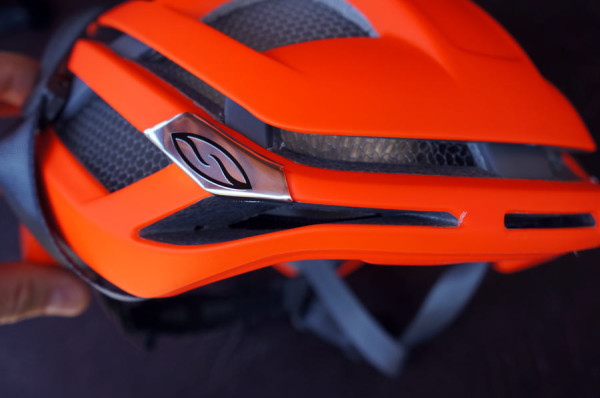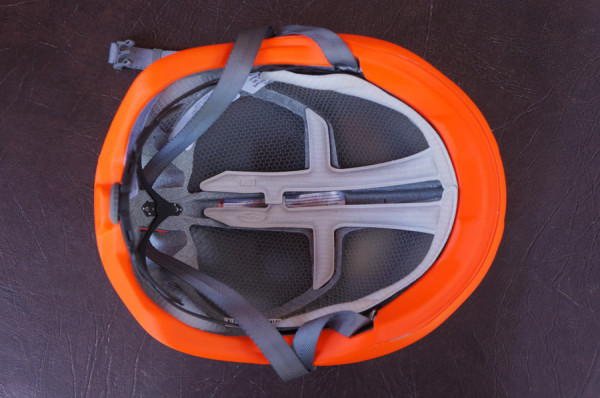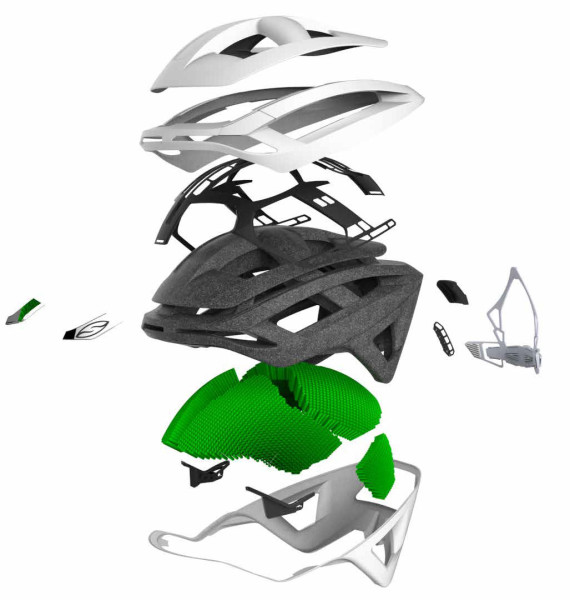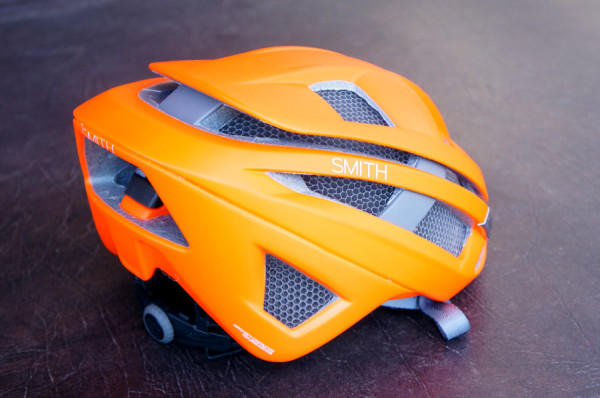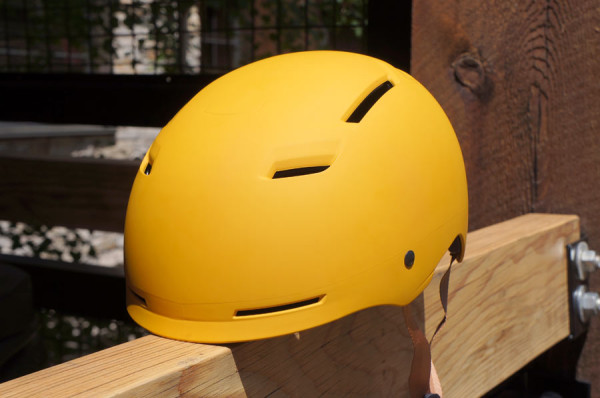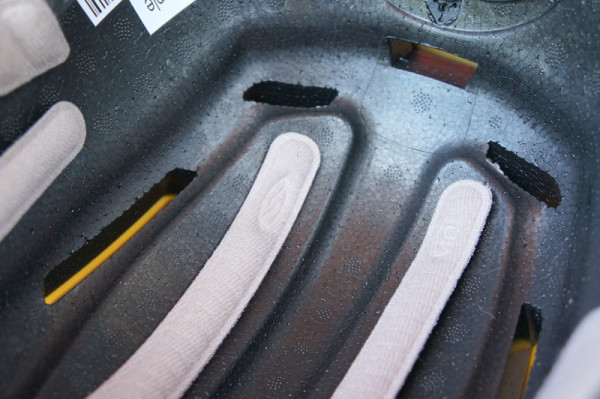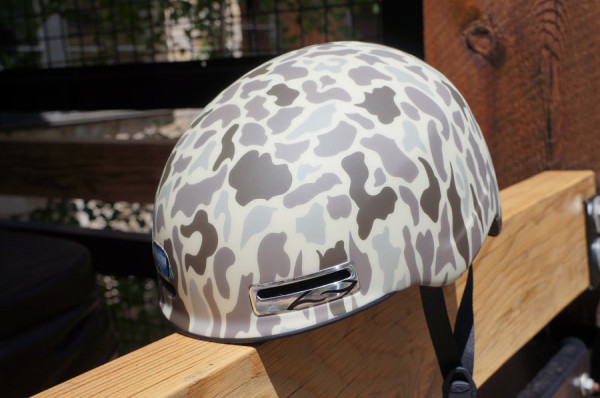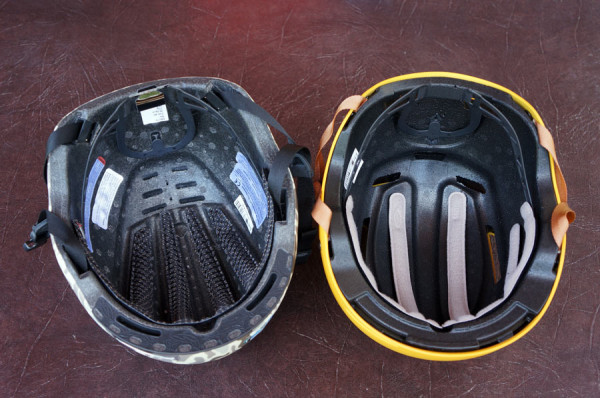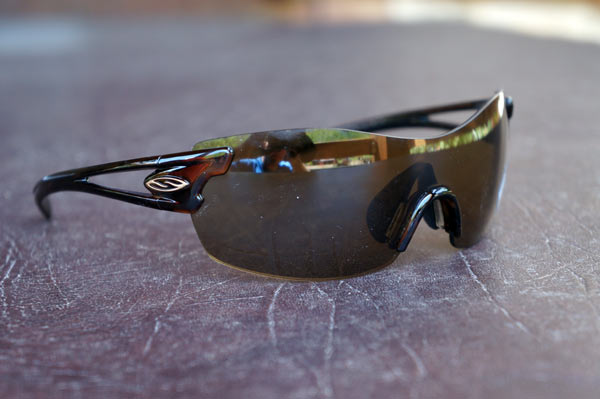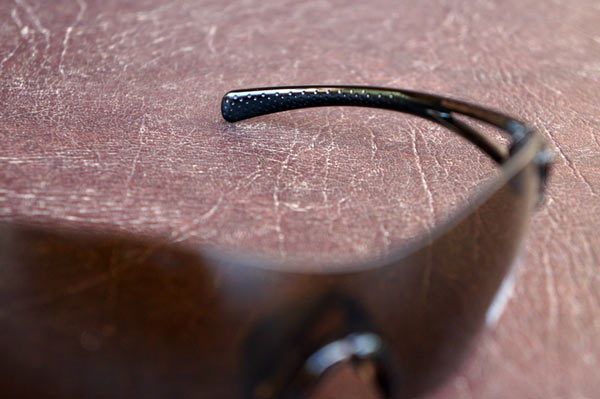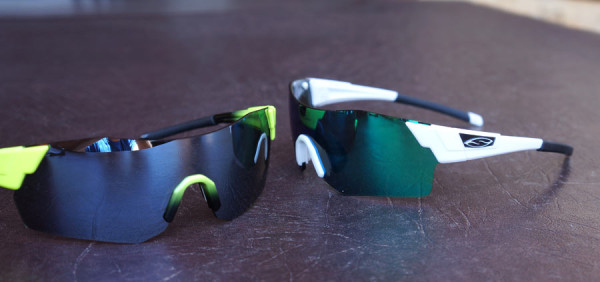Smith’s Forefront helmet was introduced last year and brought about the Koroyd Aerocore construction in the trail mountain bike segment.
Now, they’re bringing that to the road and XC segment with the Overtake, as well as bringing two new urban/dirt jump helmets using more conventional construction. They’re also adding the MIPS rotational impact protection to all models as an option.
In addition to offering the impact protection of the Koroyd, the Overtake claims to be very aerodynamic and reasonably light at 250g. They say it also has excellent ventilation and is very comfortable.
To make it aero, they ran the shape through CFD, then took it to the wind tunnel. On the computer, they showed that they were close to the Specialized Evade. At FASTER’s wind tunnel, they proved just how close they were…
Beyond the lines of the helmet, one of the ways they could get it more aero was because the Koroyd offers its protection with a very low volume. As in, it can be a thinner layer compared to EPS while still offering the same amount of protection. So, helmet volume is less, creating a smaller overall package to push through the wind.
And Adam Greene, Smith’s director of marketing, adds the much better ventilation will make you more comfortable, helping you make up for the minimal difference in drag.
In addition to the thousands of holes in the Koroyd, the front and brow vents help bring fresh air into the helmet, and a few channels inside help carry it across the top of your head. Basically the front half helps bring cool air in while the back half helps vent hot air out. Just like a regular helmet, only different.
As for safety, a quick recap of Koroyd: It’s a bundle of round plastic tubes that compress better upon impact than EPS, which means fewer G-forces are reaching your skull. The safety design looks at four aspects of protection: low and high speed impacts, rotational impact and multi impact. Not every helmet may address all four based on the intended use, but those are the pillars upon which they start.
Another safety feature of the Overtake is the shape of the brow, which provides a wide field of vision, particularly when you’re head’s facing down on the road bike and you’re looking forward with your eyes.
It’ll come in 12 different colorways with a base price of $250. Four colors will be offered with MIPS, which’ll up it to $310 and add a few grams.
The new Axle dirt jump helmet uses a dense EPP (expanded polypropylene) foam rather than EPS (expanded polystyrene) that offers multi-impact protection:
Right now, there are no CPSC standards regarding multi-impact for bicycle helmets, but they’re helping to push them into creation. For skate/wintersports helmets, the number is two or three, but Smith wants to have the helmets last for more than that. They won’t claim a specific number, simply stating it’ll exceed current standards. The Axle will also have MIPS when it goes into production.
The Maze is another new helmet, this one more for the urban/commuter crowd.
The Maze (left) gets standard EPS foam, but both get interior channels and small rear vents.
UPDATED SMITH SUNGLASSES
The new Asana replaces the V90 and eliminates the rubbery grips on the arms. Since the V90’s shape and style was popular among women, they found the grips on the arms were pulling hair, so now they’re smooth. They’re also a bit shorter, which should improve fit when worn with a wider variety of helmets.
The Asana also gets the adjustable nose piece, which for all models goes from a three-position adjustment to a two-position adjustment. The widest setting is gone.
The Arena is another full coverage pair of sunglasses that replaces the V2. It keeps the Pivlock lens removal design, but gets a straighter lens with only a curve around the face rather than the V2’s compound curve. That lets it sit closer to the face for better wind protection and, hopefully, to keep mud from splashing up under the lens and into the eye…an issue I’ve had real problems with. It’ll also be available with a bigger Arena Max lens, too, and plenty of lens and frame colors.
While the standard V2 is going away, the V2 Max will remain in the line for now.
All new eyewear is available in August and September and retail on both is $159 and includes three different lenses. At launch, there is no photochromic option.
